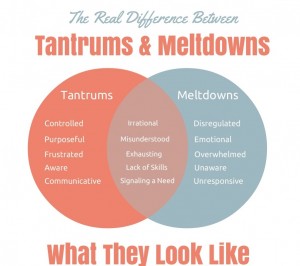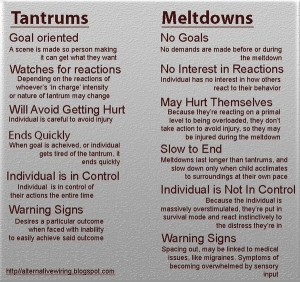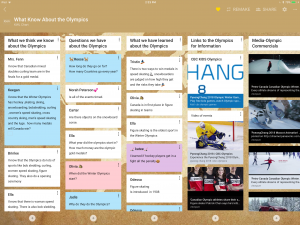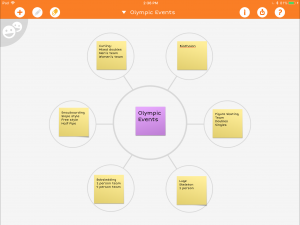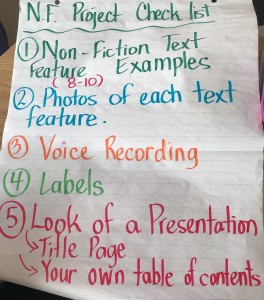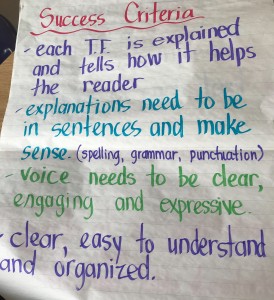
Road rerouted to preserve 250 year old Bronte White Oak Tree
“The strongest oak of the forest is not the one that is protected from the storm and hidden from the sun. It is the one that stands in the open, where it is compelled to struggle for its existence against the winds and rains and the scorching sun.” Napoleon Hill (1883–1970)
Building Self Care and Resiliency for Educators
As educators, we deal with students and colleague who are under stress. As educators, we are at risk of being physically, mentally, and/or emotionally worn out due to our role as caregivers to our students. This feeling of being worn out can be referred to as compassion fatigue or secondary traumatic stress (Figley, 1995). Charles Figley states that “there is a cost to caring.”
The best way to deal with and limit compassion fatigue is through early recognition and self awareness.
A. Tips for Educators
(adapted from Charles Figley, 1995)
1. Be aware of the signs of compassion fatigue
- increased irritability or impatience with students
- difficulty planning classroom activities and lessons, decreased concentration
- feeling numb or detached from students’ challenges
- increased feelings and intrusive thoughts about school or dreams about challenges in school
2. Reach out for support – Don’t go it alone
- isolation can impact ability to cope
- get support from colleagues or your school teams
- ask for support from administration
3. Recognize compassion fatigue as an occupational hazard
- when educators open their hearts and ears to students’ trauma, compassion fatigue can occur
- having a strong reaction to student trauma is not a sign of weakness or incompetence but instead it is means you care … it is the cost of caring
4. Seek help with your own trauma by seeking support for self
- educators’ unresolved issues can put them at more risk of compassion fatigue or stress
- seeking support for self can help educators deal with limiting compassion fatigue or stress
5. Attend to self care
- self care is an effective way to guard against burn out from compassion fatigue or stress
- self care helps educators deal with challenging workplace stress
- key self care strategies include eating well, sleeping well, exercising, taking a break during the workday, taking time to self-reflect, making time to de-stress
- know your triggers for stress
B. Stress management: Know your triggers/stressors
In order to manage stress better, you need to know your stressors or triggers. (Adapted from Mayo Clinic Staff, n.d.)
Main types of stress: Stress is your body’s reaction to the demands of work and life. Stressors are events or conditions in your surroundings that may trigger stress. Your body responds to stressors differently depending on whether the stressor is new or short term (Acute stress) or whether the stressor has been around for a longer time (Chronic stress).
Acute stress: Also known as the fight-or-flight response, acute stress is your body’s immediate reaction to a perceived threat, challenge or scare. The acute-stress response is immediate and intense, and in certain circumstances it can be thrilling. Examples of acute stressors include having a job interview or getting a speeding ticket.
A single episode of acute stress generally doesn’t cause problems for healthy people. However, severe acute stress can cause mental health problems — such as post-traumatic stress disorder. It can also cause physical difficulties such as tension headaches, stomach problems or serious health issues — such as a heart attack.
Chronic stress: Mild acute stress can actually be beneficial — it can spur you into action, motivate and energize you. The problem occurs when stressors pile up and stick around. This persistent stress can lead to health problems, such as headaches and insomnia. The chronic-stress response is more subtle than is the acute-stress response, but the effects may be longer lasting and more problematic.
Effective stress management involves identifying and managing both acute and chronic stress. Check out developing a self care plan below!
C. Build Resiliency
(Adapted from CAMH Resiliency & Short Term Self Care, n.d. )
Resilience is frequently described as the capacity to thrive and fulfill one’s potential despite (or perhaps because of) stressful circumstances. All of us are resilient in one way or another, but some people seem to be more resilient. These people are inclined to see challenges as learning opportunities which can result in healthy emotional growth and development.
Factors that are characteristic of resilient people include:
- a sense of closeness and connectedness to others
- strong, dependable support from at least one significant other in their lives
- attention to their own personal health and well-being
- high self-esteem, a strong sense of personal identity
- a sense of humor can help you overlook the unattractive, tolerate the unpleasant, cope with the unexpected and smile through the unbearable.
- a realistic and balanced awareness of their strengths and limitations
- the ability to be assertive and emotionally tough when necessary, but also sensitive and compassionate
- a playful, lighthearted approach to life
- a sense of direction and purpose in life
- the ability to turn difficult experiences into valuable learning opportunities
- the capacity to pick themselves up, shake themselves off and keep moving forward after traumatic and upsetting situations
- the ability to adapt to and live comfortably with uncertainty and unpredictability
- the ability to laugh at themselves. Resilient people do not “sweat the small stuff.”
D. Short-term Strategies: Putting on the brakes to relieve stress
Short-term strategies that help ease anxiety are unique to each person. List the quick wins that might be most helpful for you, and add to your list when something comes up that you find pleasant or re-energizing.
Here are some simple ways to relieve stress that I use:
Tweet more at #EdStressReliever
- eat your lunch away from your classroom or workspace
- talk to a colleague
- help a colleague
- tell a joke
- take a walk
- ask for help
- ask for advice
- stretch
- 4-7-8 breathing 4 in-7 hold-8 out
- bake something and share it with colleagues
- make jam
- practice kindness for colleagues – do something kind for a colleague to make their day better
E. Making it Personal
Here are some quizzes you can do to help you know yourself and how you deal with stress!
Self Assessment for Stress and Burnout
“How Resilient Are You?” by A. Siebert (resiliencycenter.com)
“The Resiliency Quiz” by N. Henderson (resiliency.com/htm/resiliencyquiz.htm)
Making a self care plan that works for me
Write down strategies you use to relieve stress in your life. Self care is not just about the self, self care means looking out for other people who work with educators.
F. Connecting self care and Resiliency …
Ontario College of Teacher (OCT) Standards of Practice and Ontario Institute for Education Leadership (OLF)
Connect to OCT Standards of Practice and OLF
As educators we do more than “just teach”, we care for our students and our colleagues. Teaching is about relationships and caring. I became a teacher to make the world a better place one student at a time and one day at a time.
Be good to yourself so you can be there for your students. Be an oak tree!
Collaboratively Yours,
Deb Weston
References
Figley, C. R. (1995). Compassion fatigue: Secondary traumatic stress disorders from treating the traumatized. New York: Brunner/Mazel, 7.
Mayo Clinic Staff, (n.d.) Stress management: Know your triggers http://www.mayoclinic.org/healthy-lifestyle/stress-management/in-depth/stress-management/art-20044151
O’Grady, C. P., & Skinner, J. W., (2007) MSCAMH A Family Guide to Concurrent Disorders (CAMH Resiliency & Short Term Self Care) Downloaded from http://www.camh.ca/en/hospital/health_information/a_z_mental_health_and_addiction_information/concurrent_disorders/a_family_guide_to_concurrent_disorders/selfcare/Pages/shortterm_selfcare.aspx
Stress Cat (n.d.) http://www.lessons4living.com/stresscat.htm


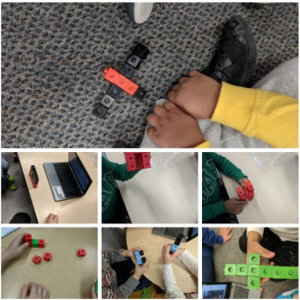
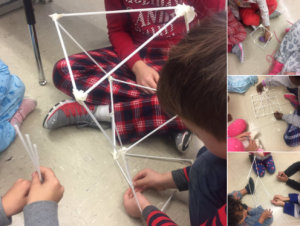
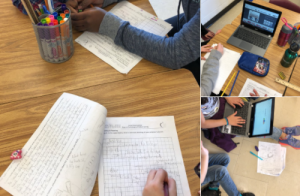
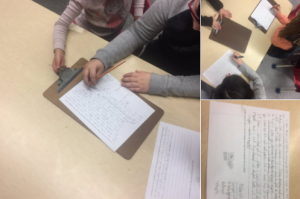
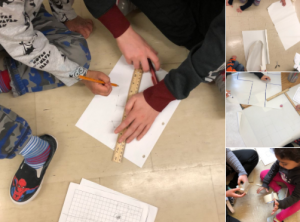
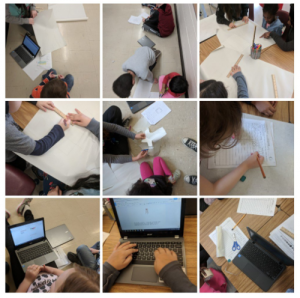 Next week we are on to our build and learning about hand tool safety in kindergarten. It’s sure to be a new adventure and I can’t wait to see and share the actual solutions that they create.
Next week we are on to our build and learning about hand tool safety in kindergarten. It’s sure to be a new adventure and I can’t wait to see and share the actual solutions that they create.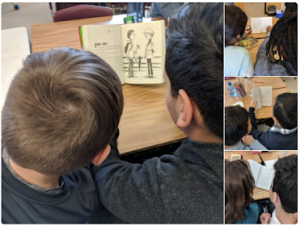
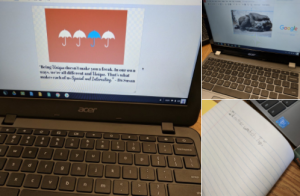 On Day 1, many groups decided to start off with reading and to jump into making predictions through the use of Padlet. They discussed and made inferences based on the blurb, images from the text and what they read in the first few pages and determined what they thought the text would be about and from whose perspective the text may be written. Today, some groups decided to search for a quote that had a deeper meaning that could be applied to our lives while others took some time to visualize the setting and drew a scene. It’s inspiring not only to see students helping each other out with pronouncing and/or making meaning from new or unfamiliar words but there is also a true sense of collaboration as they work understand the text and in the completion of tasks. They may not necessarily be in groups with their friends but they are making new friendships as they work together and learn from and about each other.
On Day 1, many groups decided to start off with reading and to jump into making predictions through the use of Padlet. They discussed and made inferences based on the blurb, images from the text and what they read in the first few pages and determined what they thought the text would be about and from whose perspective the text may be written. Today, some groups decided to search for a quote that had a deeper meaning that could be applied to our lives while others took some time to visualize the setting and drew a scene. It’s inspiring not only to see students helping each other out with pronouncing and/or making meaning from new or unfamiliar words but there is also a true sense of collaboration as they work understand the text and in the completion of tasks. They may not necessarily be in groups with their friends but they are making new friendships as they work together and learn from and about each other.
